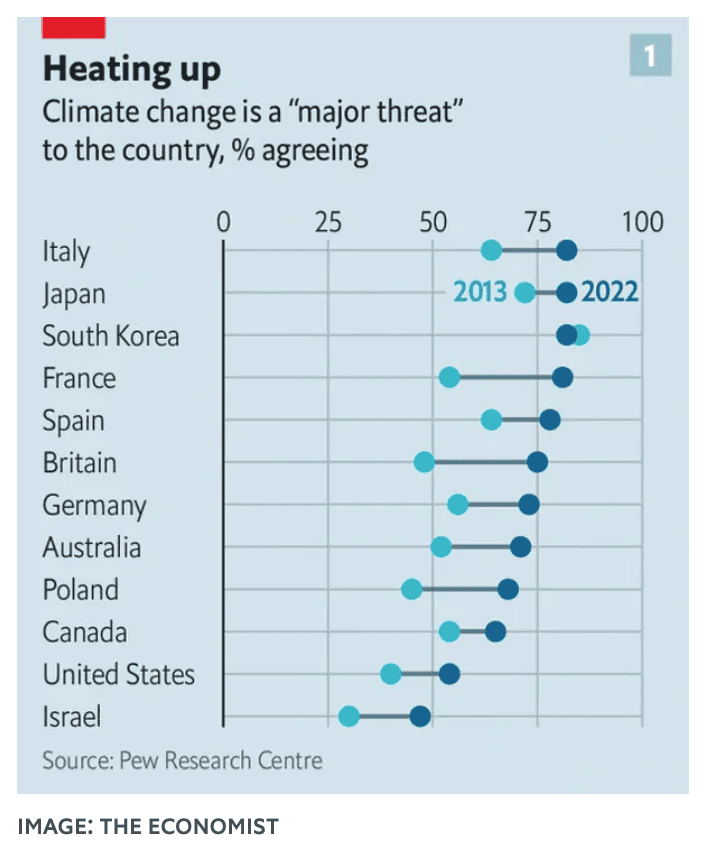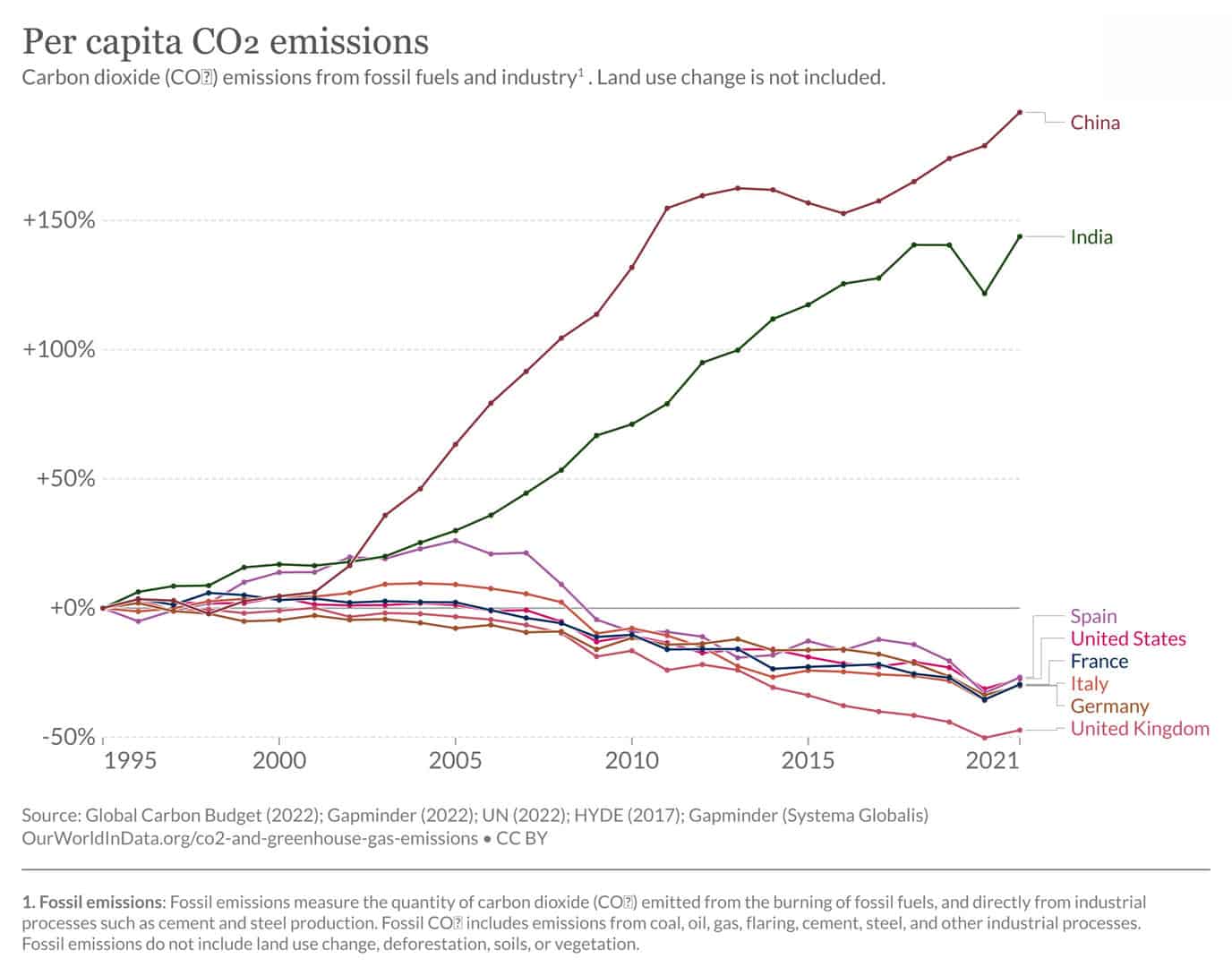Extending the ULEZ zone in London may have been a key factor in the Conservative win in Uxbridge. It was soon followed by the Prime Minister announcing changes to the UK’s climate plan.
As expected, all this generated much heat, if little or no light, among the commentariat. On one side, the changes were welcomed; some saying that they still do not go far enough and that the UK should not ‘impoverish’ itself in trying to reach net zero unreasonably quickly. On the other were predictions that the sky was about to fall in and the apocalypse had been brought closer.
Neither of these extremes should be taken seriously. As our October Chart of the Month shows, the UK has made more progress than many other countries in reducing its per capita CO2 emissions since 1995. As the chart below also shows, the UK has been one of the most advanced in reducing the carbon intensity of its economy – comparable to France with its high proportion of nuclear power generation.
Much of this is, of course, due to the fact that the UK has de-industrialised and shifted to a service economy faster than others. But climate policy has also played an important role…

The PM is right to point out that we are reaching an inflection point in climate mitigation policies. Much low hanging fruit has been picked.
We are now at a point where citizens are being asked to make tangible short-term sacrifices for long-term climate gain. We all know how difficult that is. It would be tragic if policy initiatives were to turn the public against further climate action.
Climate activists should not be stuck in their bubble and ignore the potential backlash against climate policies if they go too far too fast (see figure below). Recent elections in Germany and Switzerland have seen the rise of right wing parties largely at the expense of green parties. Pretending that the risks of a backlash do not exist is foolish and self-defeating.

But there is a further issue that is important to consider. Have Western countries really improved their overall carbon footprint or just their measured emissions?
A recent study for Germany showed that the fall in German CO2 emissions was almost perfectly offset by the import and consumption of products with embedded carbon. In other words, what we may all be doing is not reducing carbon emissions at all but rather exporting them to China, India and other nations where emission standards are much lower.
The proposed EU Carbon Border Adjustment Mechanism is intended to address this issue – at least in part. It is contentious, will be difficult to implement, and may result in years of litigation.
For climate activists, the reality is that climate progress now largely depends on China and India transforming the carbon intensity of their economies.
That seems highly unlikely in the short- to medium-term. Sit-ins in and spraying orange powder in Tiananmen Square probably won’t cut it as a way forward.






I am endeavouring to bring a handful of industrialists together, inviting them to seek ways of changing their practices and finding symbiotic solutions, advised by carefully selected specialists to guide them towards our cleaner future. My second book in ‘The Woodland Sprite Series’ includes such individuals as able to transform into the heroes of our time/weather, described as ‘Les résolveurs de notre temps’, while acknowledging their remarkable inventiveness and achievement for a different era.
I agree with the per capita issues demonstrated in the article. Yet, the problem of carbon omission stretches across a much broader landscape with high density through continued industrial production, particularly in the building sector. With a background in architecture and design, sustainable building practices should be encouraged to move away from using cement, for example, the third largest industrial source of pollution, emitting more than 500,000 tons of pollutants per year and to find alternatives. Tarmac is part of the same issue as is the protection of soil and its ability to drain.
Perhaps, to achieve symbiotically living, our motives and emotions must cooperate away from thinking with the dominant competitive left-hand side of the brain alone; instead, by re-thinking our checklists, only incorporating what’s relevant into visionary ideas formed on the right-hand side to cooperatively resonate with a bigger picture in harmony with each other and Nature for wellbeing, encouraging the appreciation of true riches and values far removed from consumerism.
In writing about value systems, climate change and sustainable living through the lens of a fantasy world of fairies, I aim to unite nations through the love of Nature, especially bringing China and India into the equation. As your article rightly points out, we exploit other countries to provide what we wish to have, diverting our carbon footprint to fudge individual data.
An Ex-Chair of Radix has kindly offered to co-host dinners with me at his home in Brussels. I intend to bring industrialists to this table, inviting Embassy representatives for their input towards achieving mutual aims and ambitions for a cleaner future of clear thinking.
I ask the like-minded to be in touch to join me in achieving joint aims and ambitions.
Fleur Rossdale
[email protected]
http://www.soot.cloud
Thanks you for your commentary. Have looked at your web site. An impressive endeavour that deserves to succeed. It’s a big undertaking and all power to you for imagining such a future and doing something about it.